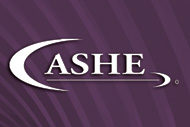
Image from Getty Images
For organizations accredited by The Joint Commission (TJC), changes to the standards and elements of performance in the Environment of Care and Life Safety chapters of the Comprehensive Accreditation Manuals for multiple programs (including both hospitals and critical access hospitals) will be going into effect soon. According to TJC, the revised elements of performance (EP) “strengthen expectations for accredited organizations as they relate to the National Fire Protection Association (NFPA) codes.”
As a deemed accreditation organization by the Centers for Medicare & Medicaid Services (CMS), TJC writes its standards based on the CMS Conditions of Participation (CoPs), which include compliance with the 2012 editions of NFPA 101®, Life Safety Code® and NFPA 99, Health Care Facilities Code. Its recent changes clarify the wording of the TJC standards to better align them with the requirements of these two and other NFPA codes included by reference. (Non-deemed organizations such as the Veteran’s Health Administration or Department of Defense facilities accredited by TJC should note that they do not use the 2012 edition of these codes but are required to comply with the edition that has been adopted by their organization.)
Environment of Care Chapter updates
Below is a list of changes to TJC’s Environment of Care Chapter:
- EC.01.01.01 EP9 was revised to add a note that applies to business occupancies in leased facilities. Rather than requiring a written utility management plan for these spaces, the plan “may only need to address how routine service and maintenance for their utility systems are obtained.”
- EC.02.03.03 EP7, which requires an annual fire drill, was previously written to apply to anesthetizing locations where flammable liquids such as germicides or antiseptics are used in conjunction with ignition sources like laser or cautery. The wording has now been revised to apply to any and all operating rooms/surgical suites. The change directly aligns with NFPA 99-2012 Section 15.13, which has requirements for fire prevention in operating rooms.
- EC.02.03.05 EP1 changes clarify the requirements for testing of supervisory signal devices to bring them in compliance with Table 14.4.5 of the NFPA 72, National Fire Alarm and Signaling Code, 2010 edition, which is referenced by both NFPA 101 and NFPA 99. Previously, the standard required quarterly testing for all supervisory signal devices except valve tamper switches. The new wording clarifies that some types require quarterly testing, some require semiannual testing and some require annual testing. It also adds a note that water storage tanks and water storage equipment are not required to be tested.
- EC.02.05.01 EP23 is expanded to clarify the requirements for power strips used in health care facilities, adding three notes to the wording of this EP. The first note requires that those who mount or reconfigure power strips to a medical equipment assembly are qualified to make sure it is done in compliance with the requirements of NFPA 99-2012 Section 10.2.3.6. The second note includes definitions for patient care room and patient care vicinity. And note three requires new facilities and existing facilities undergoing renovation to meet NFPA 99-2012 Section 6.3.2.2.6.2 regarding the quantity of receptacles installed in patient care rooms.
Life Safety Chapter Updates
Several changes were also made to TJC’s Life Safety Chapter. See below for a list of updates:
- LS.01.02.01 EP1 update includes a note that requires organizations to have an interim life safety measures (ILSM) policy. The note requires organizations to identify “what ILSMs in their policy will be implemented until the issue is corrected” any time they have a deficiency that cannot be immediately corrected during survey. LS.01.02.01 EP15, which previously had similar language, was revised to move the requirement to EP1.
- LS.02.01.10 EP9, LS.03.01.10 EP6, and LS.05.01.10 EP3 were revised to remove references to fire-rated smoke partitions. Smoke partitions are addressed in NFPA 101-2012 Section 8.4 and do not have a fire rating.
Special requirements for business occupancies
The rest of the changes to the Life Safety Chapter are in the LS.05 section, which applies to business occupancies.
The LS.05 standards were first introduced July 1, 2021. Previously, if a Life Safety Code deficiency was identified by a surveyor in a business occupancy, they would identify it on an observation in the Environment of Care standards. By introducing life safety standards specific to business occupancies, organizations and surveyors have a better understanding of what the expectations are. Once they were introduced, opportunities to modify the wording to bring them more in line with the requirements of NFPA 101-2012 were identified. These changes went through the process of CMS approval and are included in these newly revised standards.
- LS.05.01.10 EP7 is a catch-all for building and fire protection features in business occupancies and is expanded to include requirements for the protection of vertical openings. This EP replaces LS.05.01.10 EP4, which has now been deleted. Because vertical openings in business occupancies have so many exceptions that allow them to be open, EP7 references the Life Safety Code for requirements on vertical openings.
- LS.05.01.10 EP5 has a very small change that removes the code reference from the note of the EP to the main text but does not result in a substantial change.
- LS.05.01.20 EP8 was revised to identify an exception within NFPA 101-2012 Section 38/39.2.2.2. The Life Safety Code allows business occupancies to take advantage of an exception at 7.2.1.5.5, which permits principal entrance/exit doors to have a lock so long as it meets the requirements of this section..
- LS.05.01.30 EP1 refers to the protection of hazardous areas in business occupancies and references NFPA 101-2012 Section 8.7. This section requires that new hazardous areas be enclosed with 1-hour barriers and a 45-minute door, or with a combination of sprinklers and smoke partitions. Existing hazardous areas, if they are non-sprinkled, must be enclosed with 1-hour fire barriers and a 45-minute door. The new wording of this EP does not differentiate between new and existing requirements. The American Society for Health Care Engineering has asked TJC for further clarification on this issue.
- LS.05.01.30 EP3 includes the requirements for alcohol-based hand rubs (ABHR) and was revised to remove references to smoke compartments since smoke barriers are not a requirement for business occupancies. It also removes the requirement that buildings be fully sprinkled if ABHR is installed over carpeted floors. Note, however, that the 2012 edition of the Life Safety Code does not explicitly address ABHR in business occupancies, so other authorities having jurisdiction may be more stringent in the use of ABHR in business occupancies.
- LS.05.01.34 EP1 and EP2 were revised to clarify the notification requirements for fire alarm systems. Existing business occupancies allow voice communication or a public address system as notification. In new business occupancies, the system must activate a general alarm.
- LS.02.01.35 EP1 and EP2 are not new but were moved to LS.05.01.34 EP4 and EP5 since they are applicable to fire alarm systems, not extinguishment.
TJC has published these revised standards on its website. Health care organizations accredited by TJC should review these standards to ensure compliance in the new year.




